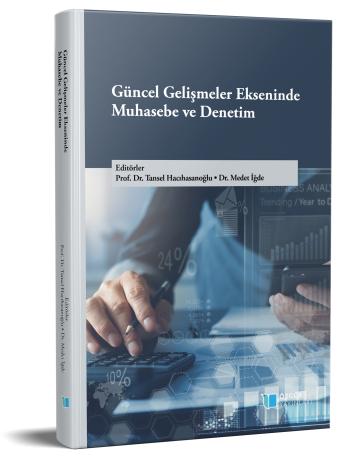
Küçük ve Mikro İşletmeler İçin Finansal Raporlama Standardı ile Büyük ve Orta Boy İşletmeler İçin Finansal Raporlama Standardının Genel Bir Karşılaştırması
Şu kitabın bölümü:
Hacıhasanoğlu,
T.
&
İğde,
M.
(eds.)
2023.
Güncel Gelişmeler Ekseninde Muhasebe ve Denetim.
Özet
Finansal bilgi kullanıcılarının işletme ile ilgili karar verme sürecinde ihtiyaç duydukları bilgiler, finansal raporlama çerçevelerine göre hazırlanan finansal tablolar yoluyla sunulmaktadır. Finansal raporlamaya ilişkin esasların yer aldığı finansal raporlama çerçeveleri ise önceleri kamu kurumları tarafından hazırlanırken daha sonra kamu kurumlarının yetkilendirdiği kurumlar tarafından hazırlanmaya devam etmiştir. KGK tarafından yürütülen bu süreç, son yıllarda büyük bir ivme kazanarak çok sayıda finansal raporlama çerçevesinin hazırlanmasına imkân sağlamıştır. TMS/TFRS’lerin yanı sıra BOBİ FRS ve son olarak da KÜMİ FRS’nin yayımlanmasıyla birlikte neredeyse tüm işletmelerin bir finansal raporlama standardına tabi olması sağlanmıştır. Bu noktada çalışmanın da konusunu oluşturan KÜMİ FRS ve BOBİ FRS büyük bir öneme sahiptir. 2013/34 sayılı AB Muhasebe Direktifindeki “önce küçükleri düşün” yaklaşımına uygun olarak hazırlanan BOBİ FRS ile 6.000 işletmenin, KÜMİ FRS ile de 639.485 işletmenin gerçeğe uygun, finansal bilgi ihtiyacını karşılayan ve karşılaştırılabilir finansal tablolar hazırlamasına imkân sağlanmıştır.
KÜMİ FRS ile BOBİ FRS’nin karşılaştırılarak farklı ve benzer uygulamaların tespit edildiği bu çalışmada; hazırlanan finansal tablolar, faydalı finansal bilginin özellikleri, finansal raporlamanın genel ilkeleri, ölçüme ilişkin ilke ve esaslar, finansal raporlamaya esas bilgiler (hasılat, stoklar, tarımsal faaliyetler, finansal araçlar ve özkaynaklar, maddi duran varlıklar ve maddi olmayan duran varlıklar) incelenmiştir. İki düzenleme arasında vade farkları, borçlanma maliyetleri, ölçüm esasları ve bölümlerin kapsamı gibi konularda önemli farklılıklar tespit edilmiştir. İfade edilen alanlarla ilgili KÜMİ FRS’de yer alan hükümlerin BOBİ FRS’de yer alan hükümlere nazaran işletmelere uygulama kolaylığı sağladığı görülmektedir.

